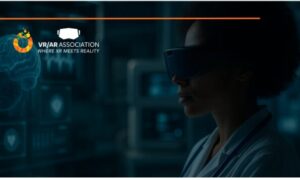Introduction:
In recent years, the convergence of healthcare and clothing has sparked a profound transformation within the wellness industry, heralding a new era of innovation and revolution. The integration of technology and textiles has played a pivotal role in unlocking the potential of wearable devices, revolutionizing the way we monitor and manage our health. These innovative wearables, at the forefront of technological advancements, are equipped with cutting-edge sensors and powered by advanced data analytics, presenting a unique opportunity to reshape the landscape of wellness. By seamlessly blending into our daily lives, these wearables empower individuals to actively participate in their healthcare journey, promoting a proactive approach to well-being and enabling personalized health management.
The fusion of healthcare and clothing has given birth to a diverse range of wearables that go beyond conventional monitoring devices. While fitness trackers and pedometers have laid the foundation, the latest generation of wearables ventures far beyond mere step counting. Equipped with a plethora of sensors, wearables can now track a wide array of vital signs and physiological parameters. From heart rate and blood pressure to body temperature and respiratory rate, wearables offer comprehensive insights into our body’s intricate workings.
Moreover, wearables have expanded their capabilities to encompass more advanced metrics, such as oxygen saturation levels, electrocardiograms (ECGs), and sleep patterns. This evolution has been made possible through the advent of smart textiles, which seamlessly integrate these sensors into everyday clothing, ensuring comfort, convenience, and unobtrusiveness.
The Evolution of Healthcare Wearables:
Clothing and technology are revolutionizing healthcare. This essay explores the fascinating intersection of healthcare and clothes and how innovative wearables might improve wellness. Smart clothes with sensors can track vital signs, body motions, and molecular indicators. These wearables could transform healthcare by giving patients and doctors real-time data to detect and manage health issues.
“Wearables will manage health issues beyond monitoring. These revolutionary technologies help people improve their health by tracking activity and managing chronic diseases. Wearables can measure and analyze health metrics to provide actionable insights and recommendations to help people make healthy lifestyle choices.”, Says Dr. Shara Cohen, CEO and Founder of Cancer Care Parcel. Wearable technology lets people be more proactive about their health, improving results and quality of life.
Healthfully Empowering Fashion:
“I’m interested in the transformative effects of cutting-edge wearables on wellness since I’m the head of marketing at Cowpuncher, a company that makes baby and kid clothes with a Western theme. The healthcare sector has undergone a revolution because of wearable technology, such as smart garments with built-in sensors. These sensors can track crucial health indicators and provide real-time information for managing one’s health. Imagine a onesie with covert sensors that monitor a child’s temperature and heart rate and provide parents with instant notifications if anything is out of the ordinary. By enabling people to easily measure their activities, check their fitness, and get individualized advice, the fusion of fashion and technology promotes holistic well-being.” Says Maham Khan, Head of Marketing at Cowpuncher Babe
For example, picture a young child wearing a playful cowboy-themed shirt embedded with smart textile technology. Unbeknownst to the child, the shirt is equipped with sensors that continuously monitor their vital signs and activity levels. As the child goes about their day, playing, running, and exploring, the sensors discreetly collect data on their heart rate, breathing rate, and movement patterns. This information is then transmitted to a smartphone app, where parents can access real-time updates on their child’s well-being.
The Power of Data and Analytics:
One of the key drivers behind the revolution in healthcare wearables is the power of data and analytics. Wearables equipped with sensors collect vast amounts of data about our bodies and activities. This data can be analyzed using sophisticated algorithms to provide valuable insights into our health and well-being. By tracking trends, identifying patterns, and detecting anomalies, wearables can help individuals and healthcare professionals make informed decisions about their health.
For example, a fitness tracker can not only monitor your heart rate and sleep patterns but also provide personalized recommendations for exercise and stress management based on the data it collects. This integration of data and analytics allows for personalized healthcare, tailoring recommendations and interventions to the specific needs of each individual.
Remote Monitoring and Telehealth:
The possibility that revolutionary wearables can be used for remote monitoring and healthcare is another important facet of these devices. Wearable technologies have the potential to enable medical practitioners to remotely monitor patients by collecting and transmitting data in real-time. This would eliminate the need for patients to make regular in-person appointments. This is especially helpful for people who have chronic diseases and require ongoing monitoring and management of their conditions.
Wearable technologies may also be used to facilitate telehealth services, which give patients the ability to communicate with their healthcare providers while remaining in the convenience of their own homes. Wearable technology, such as video conversations and real-time data exchange, makes it possible for medical personnel to evaluate the circumstances of their patients, offer direction to them, and make educated decisions regarding their care. This not only makes things more convenient but also makes it easier to get medical care, which is especially helpful for people who live in isolated or underserved locations.
Enhancing Wellness and Prevention:
Beyond monitoring and treatment, innovative wearables have the potential to promote wellness and prevention. By continuously tracking vital signs, activity levels, and sleep quality, wearables can provide timely feedback and reminders to encourage healthy behaviors. For example, a wearable device may prompt you to take a break and stretch if it detects prolonged periods of inactivity. Similarly, it can provide personalized recommendations for nutrition, exercise, and stress management based on your individual needs and goals.
Moreover, wearables can play a crucial role in the early detection and prevention of health conditions. By analyzing data over time, wearables can identify deviations from normal patterns and alert users to seek medical attention. For instance, a sudden increase in heart rate variability may indicate the onset of an illness or a potential cardiac event. By acting as early warning systems, wearables can help individuals seek timely medical intervention, potentially preventing more serious health issues.
Challenges and Future Directions:
While the intersection of healthcare and clothing through innovative wearables holds tremendous promise, several challenges need to be addressed. Privacy and security of personal health data are of paramount importance. Wearable manufacturers and healthcare providers must ensure robust security measures are in place to protect sensitive health information from unauthorized access and breaches.
Interoperability and standardization are other critical challenges. With numerous wearable devices and platforms available in the market, it is crucial to establish common standards that allow seamless integration and sharing of data across different systems. This will enable healthcare professionals to access comprehensive and accurate information, regardless of the brand or type of wearable being used. Looking ahead, the future of healthcare wearables appears exciting. Advances in sensor technology, artificial intelligence, and machine learning will further enhance the capabilities of wearables. We can expect wearables to become even more intelligent, capable of predicting health issues before they arise and providing personalized interventions for individuals based on their unique health profiles.
Conclusion:
The intersection of healthcare and clothing through innovative wearables has brought forth a seismic shift in the realm of wellness, holding the immense potential to reshape our approach to health monitoring and
management. By seamlessly integrating technology and textiles, wearables have evolved into highly sophisticated, comfortable, and practical tools for monitoring and enhancing our health. The integration of data and analytics has emerged as a transformative force, equipping individuals with the power to take charge of their well-being. Wearables can collect and analyze vast amounts of data, enabling individuals to gain valuable insights into their health status, make informed decisions, and take proactive steps toward improving their overall wellness.
Moreover, wearables act as early detection systems, leveraging the power of continuous monitoring and advanced analytics. By analyzing data patterns over time, wearables can identify deviations and anomalies that may indicate the early onset of health conditions. This early detection capability enhances the potential for timely intervention, leading to better health outcomes and potentially preventing the progression of diseases. Looking ahead, the future of healthcare wearables appears bright, with continuous advancements in technology on the horizon. Sensor technology, artificial intelligence, and machine learning will further enhance the capabilities of wearables, enabling more accurate and insightful data analysis. Wearables are poised to become even more intelligent and capable, utilizing predictive algorithms to anticipate health issues and provide personalized interventions. This transformative potential will not only revolutionize the way we approach healthcare but also foster a future where well-being is seamlessly integrated into our daily lives through the clothes we wear. As we embrace these innovative solutions, we move closer to a lot where individuals are empowered to take an active role in managing their health, supported by wearable devices that serve as constant companions on their wellness journey.



































